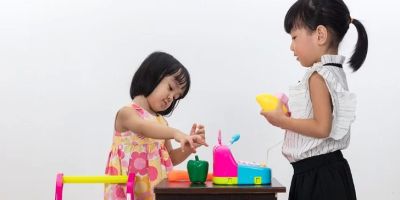Best Toys for Teaching Kids About Kindness
As parents and caregivers, one of the most important lessons we can teach our children is kindness. Developing empathy and compassion early on sets the foundation for healthy relationships and a positive outlook on life. While there are many ways to teach kids about kindness, one of the most effective methods is through play. Toys that encourage sharing, cooperation, and caring behavior provide children with the opportunity to practice kindness in a safe and fun environment. In this article, we’ll explore the best toys for teaching kids about kindness and how they can help instill these essential values in young minds.
1. The Importance of Teaching Kindness
Kindness is a core value that shapes how we interact with others. From a young age, children are learning how to navigate the world around them, and their experiences can have a profound impact on their behavior. By teaching kids the importance of kindness, we equip them with the emotional intelligence needed to build strong friendships, show empathy, and solve problems with care. Kindness also plays a critical role in emotional well-being, as it fosters a sense of connection and belonging. However, kindness is not just something that can be taught with words; it’s something that needs to be practiced and reinforced regularly. That’s where toys come into play.
2. Toys That Encourage Kindness Through Cooperative Play
One of the best ways to teach kids about kindness is through toys that promote cooperative play. These toys encourage children to work together, share, and think about the needs of others. Board games, building sets, and role-playing toys are excellent tools for teaching kids how to collaborate and share with others.
2.1. Board Games and Puzzles
Board games like "The Game of Life" or "Candy Land" encourage children to take turns, be patient, and share the game experience with others. These games provide structured opportunities for kids to learn how to navigate social interactions while practicing kindness and respect for others' feelings. Puzzles also promote teamwork when done in a group setting. By working together to complete a puzzle, children experience the joy of contributing to a shared goal and learn how to support one another in a collaborative effort.
2.2. Building Toys
Building toys, such as LEGO sets, are another fantastic tool for teaching kindness. These toys require children to work together to create structures and designs, encouraging them to collaborate and share their ideas. In doing so, kids develop skills like communication and problem-solving while fostering a sense of responsibility toward others. By working on a project together, children also learn the importance of patience and persistence, which are vital aspects of kindness.
3. Toys for Teaching Compassion and Empathy
Teaching compassion and empathy is a natural extension of teaching kindness. Toys that encourage kids to think about how others might feel are perfect for nurturing these emotional skills. Stuffed animals, dolls, and role-playing toys help children understand the emotions of others and respond with care and concern.
3.1. Stuffed Animals and Dolls
Stuffed animals and dolls offer children the opportunity to take care of something and practice nurturing behaviors. Many kids form deep emotional attachments to their stuffed animals, and this bond can be used to teach compassion. For example, a child might "take care" of their stuffed animal when it is "sick" or help it "feel better" after an accident. These interactions help kids understand that they have the ability to comfort and care for others. Additionally, dolls and action figures often come with a variety of scenarios and accessories, which can be used to teach empathy as kids imagine how their characters might feel in different situations.
3.2. Role-Playing Toys
Role-playing toys, such as play kitchens, doctor kits, or grocery sets, are excellent for teaching kids about compassion and empathy. These toys allow children to take on different roles, such as being a caregiver, doctor, or friend, and practice helping others. For example, a child playing with a kitchen set might "cook" meals for their family and share them, learning the value of generosity and thoughtfulness. By acting out different scenarios, children develop a deeper understanding of how others feel and how to respond to those emotions with kindness.
4. The Benefits of Kindness-Focused Toys
Choosing toys that focus on kindness offers numerous benefits for both children and their families. These toys help instill positive values early on, setting a strong foundation for future relationships and emotional well-being. Here are just a few of the many benefits of kindness-focused toys:
4.1. Building Stronger Relationships
When children learn how to share, cooperate, and empathize with others, they build stronger, more positive relationships with their peers and family members. Kindness-focused toys encourage social interactions that help children develop essential social skills, such as communication and conflict resolution. These skills are key to forming meaningful, supportive relationships as children grow older.
4.2. Increasing Emotional Intelligence
By engaging with toys that promote kindness, children are also learning to understand and manage their emotions. They begin to recognize their own feelings as well as the feelings of others. This increased emotional intelligence helps children navigate complex social situations and handle challenges with greater sensitivity and resilience.
4.3. Promoting a Positive Environment
Kindness-focused toys create a positive and nurturing play environment. When kids learn the importance of kindness at an early age, they are more likely to carry these values with them into their daily lives. This not only creates a more harmonious atmosphere at home but also encourages children to spread kindness in their schools and communities.
5. Conclusion
Incorporating toys that teach kindness into your child’s playtime is a wonderful way to foster empathy, compassion, and positive social interactions. Whether it’s through cooperative games, nurturing dolls, or imaginative role-play, these toys encourage children to think about the feelings of others and act with care. As children grow, these lessons will serve them well, helping them develop into kind, compassionate individuals. By selecting the best toys for teaching kindness, you’re not only enhancing your child’s playtime but also contributing to their overall emotional and social development.





